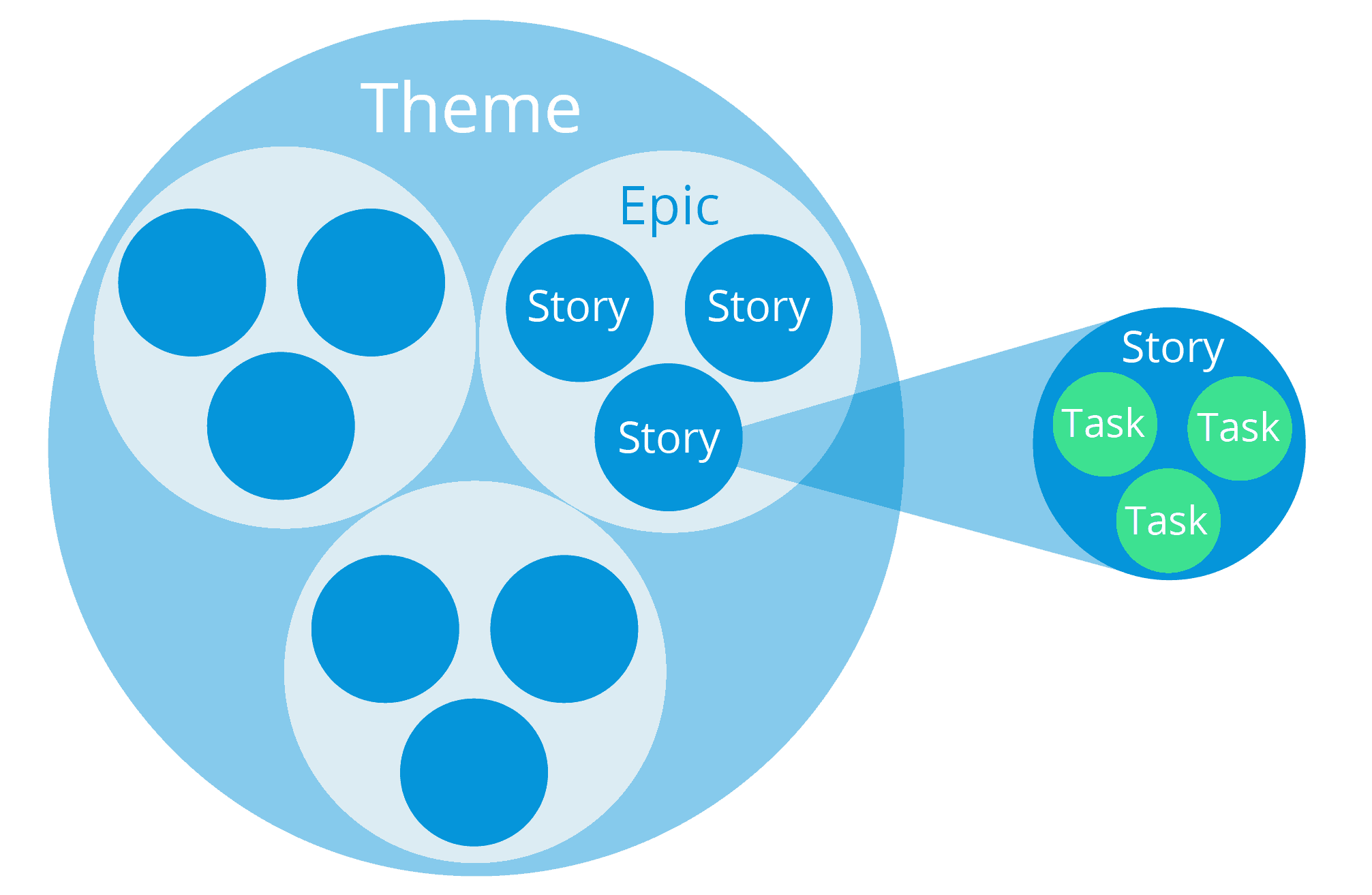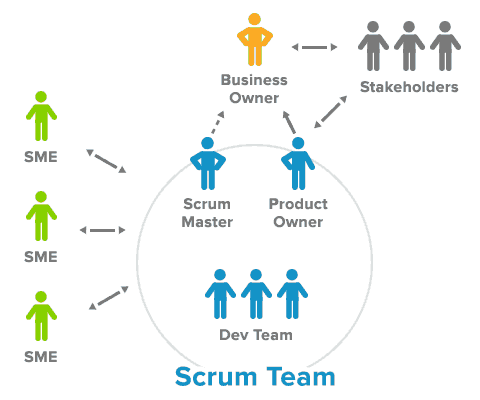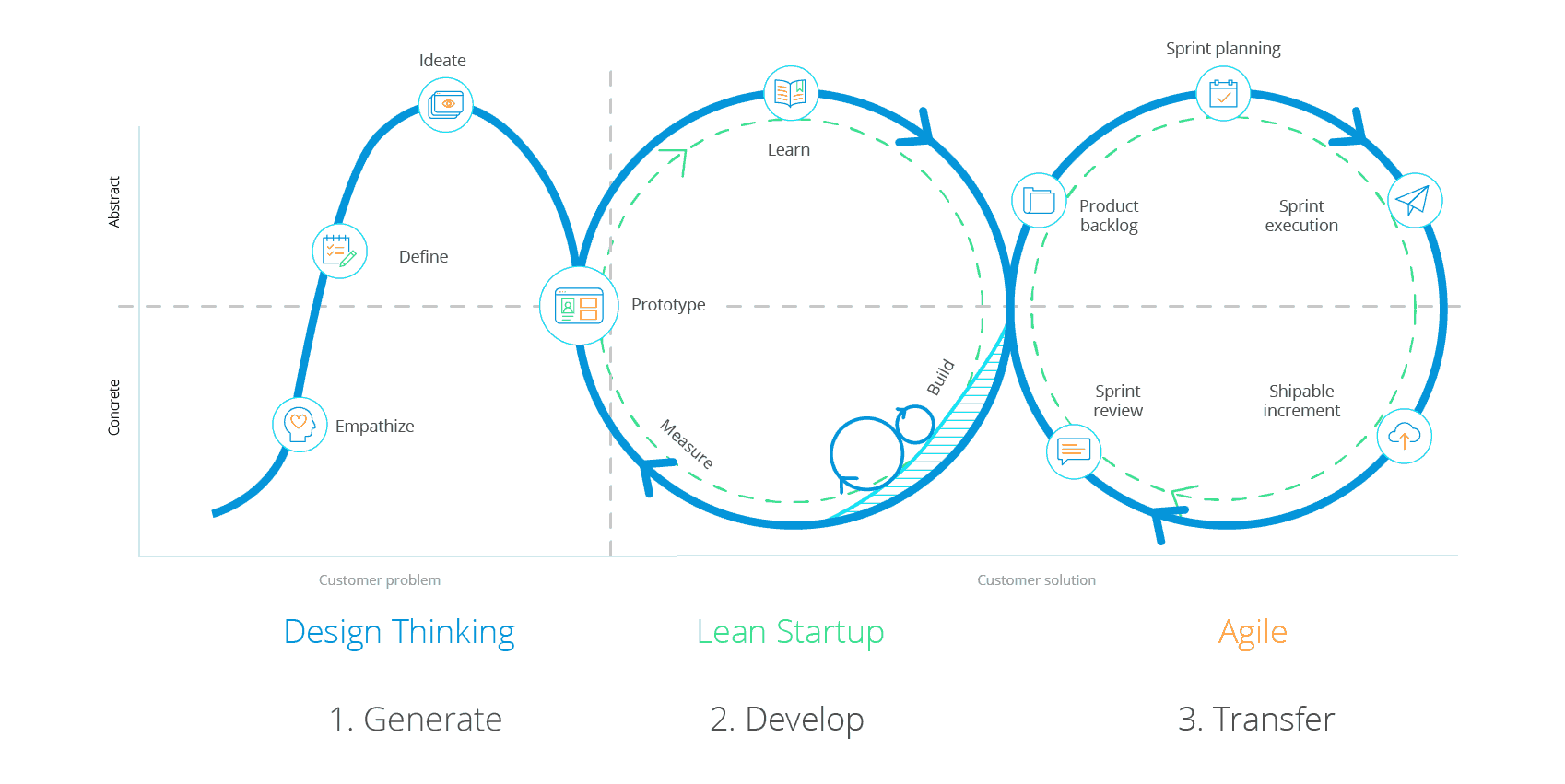One of the steps to successful digital transformation is to learn agile best practices and to prepare the business for rapid, collaborative and iterative development. Many organizations must go from traditional waterfall methodology to rapid, agile development. This shift must take place not only within the Scrum team but also within the culture of the entire organization.
Here are 14 articles we have written to help you on your journey to adopting agile development and Scrum:
Getting Started with Agile and Scrum
1. The Road to Adopting Scrum – Preparing for Your Journey
While some in your organization may already know about the Scrum methodology, all team members and stakeholders need to have the same understanding and expectations when starting development of a new product. This blog post provides a few tips to ensure that everyone has the same information.
2. Changing Your Companies Culture from Waterfall to Agile
Russ Martin, a Senior Software Engineer at Erie Insurance, shares the trials and tribulations his organization encountered when trying to shift their focus from waterfall to agile methodology, along with some tips on how to overcome them.
3. How to Improve Agile Communication and Trust
Agile development has tight and frequent deadlines – especially with a Mendix project where the deadlines are usually 1-2 week sprints. When companies choose to do agile development after being focused on waterfall or other restrictive development methodologies, it requires a complete shift in mindset. The best way to handle the challenges of tight deadlines and multiple stakeholders is to communicate effectively with all team members. This blog post shares five recommendations to improve agile team communication and build trust.
4. From Visions to Epics to Stories to Tasks – Agile Requirements Management Simplified
One of the challenges with agile development is capturing the requirements. In an ideal world, agile requirements management is simple because the customer already knows what they want, the developer knows how to build it, and nothing will change along the way. But how many projects have you been involved with that progress in this ideal way? Read this blog for best practices for getting started with and managing agile requirements.

5. Best Practices and Tools for Agile Sprint Planning
Agile development requires online tools and solutions to effectively manage projects. Read about the principles implemented in Mendix to help with agile sprint planning.
6. Three Tips for Making Agile Ceremonies More Rewarding
So, you’re now using agile – great! The first few sprints can be difficult – learning the new methods can be trying and the value is not always easy to see. Once you understand the new processes, the agile ceremonies can become boring and repetitive. This blog post gives three areas to focus on to see the value and make sure the team is involved and excited.
Mistakes to Avoid When Adopting Agile
7. Five Reasons Why Agile Fails and How to Fix It
From our experience working with companies across healthcare, finance, education, government and many other verticals, we have noticed that every company has its own spin on agile. And while every company needs to customize processes to their own unique group, there are a few common mistakes that we repeatedly see. This article lists the top five mistakes made with agile methodology implementation and tips to avoid them.
8. How Not to Apply Agile Within Your Mode 2 Team
Agile methodologies like Scrum are such a critical component of digital transformation. They facilitate the short feedback cycles required to rapidly develop, test and refine new ideas, and they provide a mechanism for coping with constant change. As we’ve learned from helping organizations go Agile, though, there are a number of generally accepted Scrum principles that don’t work in practice with Mode 2 organizations. This post shares some common pitfalls to avoid to ensure you properly apply Scrum within your Mendix team(s).
Scrum Team composition
9. The Ideal Scrum Team Composition for Agile Development
Once you have the basic foundation of Scrum in place, the next step is to sort out your Scrum team composition. This post focuses on the importance of having an enthusiastic Scrum team. The Scrum team includes the Product Owner, Scrum Master, and Development team. These individuals share different tasks and responsibilities related to the delivery of the product. Scrum describes this as a self-organizing and cross-functional team. But how can you facilitate this concept within your team? Here’s a list of key characteristics that are important to consider when creating your Scrum team.

10. Top Scrum Master Skills to Learn to Drive Digital Innovation in Your Company
The Scrum Master is a critical person in the Agile process. The Scrum Master is responsible for helping the team follow best practices and for removing impediments. This blog post lists three Scrum Master skills to learn and acquire to become a Scrum Hero.
11. How to Be an Effective Product Owner in Agile Environments
The product owner is the key person that can make or break the project. This post explains how to successfully handle the most common situations that product owners in agile environments face.
12. Five Important Product Owner Skills
Like previously mentioned, the Product Owner is the key person in any project and helps in delivering solutions. They serve as a liaison between the business and the development team. They carry the product vision and what needs to be developed in addition to managing user feedback. All the projects that have great Product Owners succeed because the team has a goal and vision. Without fail, all the projects with no Product Owner, multiple Product Owners or “bad” Product Owners do not go smoothly and result in delays. This blog post shares the 5 skills that every good Product Owner should have and develop.
Agile vs. Design Thinking
13. Design Thinking vs. Agile: Combine Problem Finding and Problem Solving for Better Outcomes
While agile can provide a highly effective way of solving problems, it doesn’t guarantee that you’re solving the right problems in the first place. In this blog post, learn how a number of enterprise IT organizations have begun leveraging agile in conjunction with design thinking to find the right problems to solve.

14. Combine Design Thinking and Agile in Your Development Process to Ensure Great UX
This blog post explains what design thinking is, the benefits of using design thinking in conjunction with agile development, and provides steps to incorporate design thinking and agile in your next project.